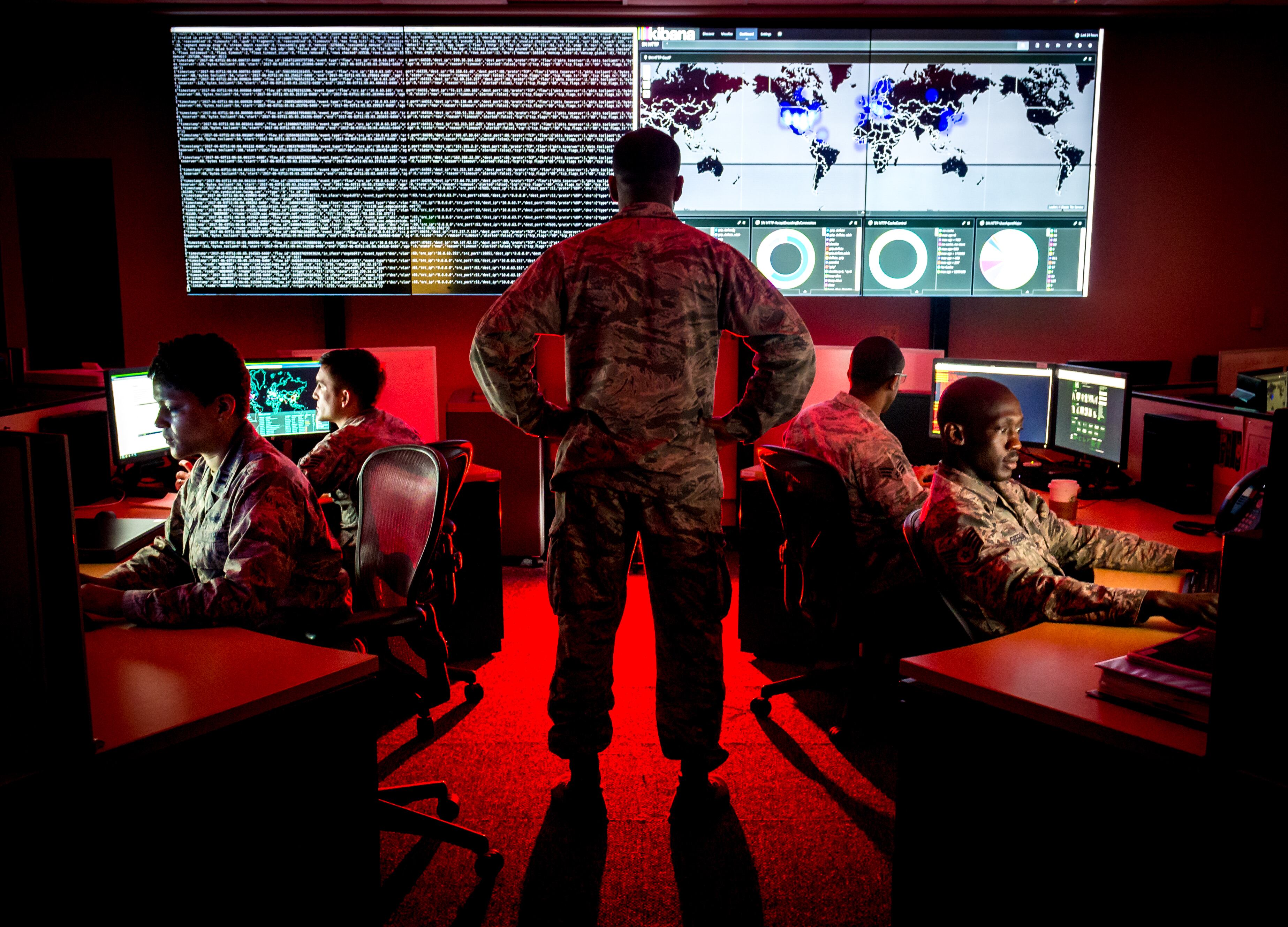The Air Force formally changed the focus of some of the teams it provides to U.S. Cyber Command in a ceremony Friday morning in San Antonio, Texas.
The reorganization, which was eight years in the making, activated the 867th Cyberspace Operations Group, located at Fort Meade in Maryland, under the 67th Cyberspace Wing while rejiggering several other units.
Some units were deactivated, activated and reassigned from intelligence wings to the cyber wing. The redesignation took more than nine months of specific planning between the 67th and the 70th Intelligence, Surveillance and Reconnaissance Wing. Over the coming months, intelligence personnel will be transferring from the ISR Wing to the cyber wing, the Air Force said.
The move aims to bring a more unified approach to cyberspace. It is also in line with the activation of 16th Air Force last October that merged the service’s cyber and intelligence, surveillance and reconnaissance numbered Air Force.
RELATED

Many of the specifics surrounding the redesignation were detailed to C4ISRNET in July. While previously Air Forces Cyber was made up of the personnel from the cyber and intelligence numbered Air Forces, the arrangement created difficulties with command relationships and oversight of teams.
This redesignation and new structure seeks to marry cyber operators, developers and intelligence forces in the same room and read in on the same missions, which officials have said will provide a tighter mission thread.
“The activation and redesignation activities we will complete today will bring unity of command and unity of effort to our air force cyber mission forces an ultimately increase the lethality we can bring to bear against our adversaries,” Col. Jeffrey Phillips, commander of the 67th Cyberspace Wing, said Sept. 18 during the ceremony that was live streamed.
The 867th, the only full spectrum cyber wing in the Air Force, will now welcome to its ranks the 315th, 341st, 833rd and the 836th Cyberspace Operations Squadrons all of which serve Cyber Command’s Cyber National Mission Force, responsible for tracking specific nation state actors in cyber space in defense of the nation.
Moreover, the 659th ISR Group loses two intelligence units that will now be redesignated under the 867th. This includes the 41st Intelligence Squadron, which is now the 341st Cyberspace Operations Squadron, and the 75th Intelligence Squadron, which is now the 37th Cyberspace Operations Squadron.
The 41st previously supported the Cyber National Mission Force as well, particularly in its new hunt forward missions. These missions involve cyber personnel to partner nations to help them with defense of their networks, providing Cyber Command unique insights into adversary tools and tactics that can be used to defend against U.S. networks.
Those operations are in direct defense of the upcoming presidential election, the group’s commander said.
“Through the deployment of hunt forward missions, the squadron has changed the paradigm of intelligence support to DCO by establishing an approach of defending forward and persistent engagement for USCYBERCOM,” Col. Brian Garino, commander of the 659th ISR Group, said during the ceremony.
The 75th previously provided ISR support for cyber operations to combat mission teams, teams that conduct cyber operations on behalf of combatant commands mostly in the offensive sphere, and combat support teams, which conduct intelligence, mission planning and other necessary support work for combat mission teams.
Garino said the 75th, as part of a presidential directed mission, conducted operations during the defense of the 2018 mid term elections. While he didn’t offer additional specifics, President Trump has confirmed that he ordered the cyber operation against the Russian Internet Research Agency troll farm that limited its internet access.
The 75th also contributed to analysis of foreign financial targets that drove the Treasury Department to blacklist enemy assets, Garino said.
Mark Pomerleau is a reporter for C4ISRNET, covering information warfare and cyberspace.








